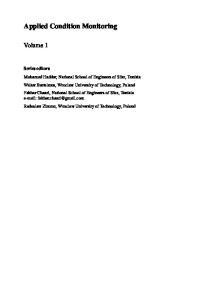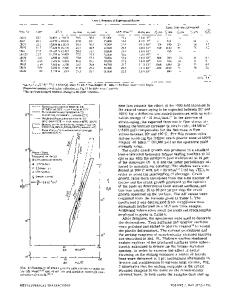Some Revisions of Fatigue Crack Growth Characteristics of Rubber
Fatigue crack growth (FCG) characteristic of rubber materials is a very important factor in determining the durability of the rubber products. Slight variations in compounding ingredients, mixing and the curing process or even in the loading conditions an
- PDF / 596,983 Bytes
- 18 Pages / 439.37 x 666.142 pts Page_size
- 104 Downloads / 397 Views
Some Revisions of Fatigue Crack Growth Characteristics of Rubber R. Stoček
Contents 1 Introduction 2 Experimental 2.1 1st Step: Sample Fixing 2.2 2nd Step: Sample Pre-conditioning 2.3 3rd Step: Tearing Energy Determination 2.4 4th Step: Notching the Initial Crack 2.5 5th Step: FCG Analyses 3 Results and Discussion 4 Conclusion References
Abstract Fatigue crack growth (FCG) characteristic of rubber materials is a very important factor in determining the durability of the rubber products. Slight variations in compounding ingredients, mixing and the curing process or even in the loading conditions and several physical factors have an impact on the final FCG behaviour of rubber vulcanisates. Thus, possible inaccuracies in the experimentally determined FCG characteristics can have direct consequences on the development of durable rubber compounds. Therefore, the aim of this work is focused on the experimental validation of the FCG characteristics of rubber in comparison with the recently customary theoretical background and functions describing the relationship between the FCG rate and the tearing energy. From the literature survey, the weak points directly influencing the accuracy of the FCG characteristics in the experimental approach were identified. The first weak point is the transient point or discontinuity of the FCG characteristics within the region of the stable FCG. To
R. Stoček (*) PRL Polymer Research Lab, Zlin, Czech Republic Centre of Polymer Systems, Tomas Bata University in Zlin, Zlin, Czech Republic e-mail: [email protected]
R. Stoček
follow on, a visible deviation of the experimentally determined data within the region of the stable FCG from the theoretical function is necessary to be validated. FCG analyses of plane strain tension samples based on ethylene propylene diene monomer (EPDM) rubber filled with a varied content of carbon black were performed using a Tear and Fatigue Analyzer (TFA©, Coesfeld GmbH & Co. KG, Germany). The FCG characteristics were plotted for a broad range of tearing energies. The intrinsic strength and the ultimate strength were determined. The region of the stable FCG was studied in detail. The continuous function of the stable FCG within the region was found, and thus, the presence of a transient point was refuted. Moreover, a specific equation was validated to fit the data into the region of the stable FCG compared to a previously preferred power-law with a higher accuracy. Keyword Analyses · Characteristics · Crack · Fatigue · Fracture · Plane strain · Rubber · Tear and Fatigue Analyzer
1 Introduction Because of the viscoelastic behaviour of elastomeric materials, rubber products are mainly used for dynamic applications in which the cyclic fatigue loading is applied and leads to a fatigue failure mechanism and, therefore, significantly influences the long-term durability. Generally, the fatigue failure process involves three phases. The very first phase is crack nucleation associated with an endurance limit, whereas at an energy input below, the endurance limit no cracks are initi
Data Loading...










